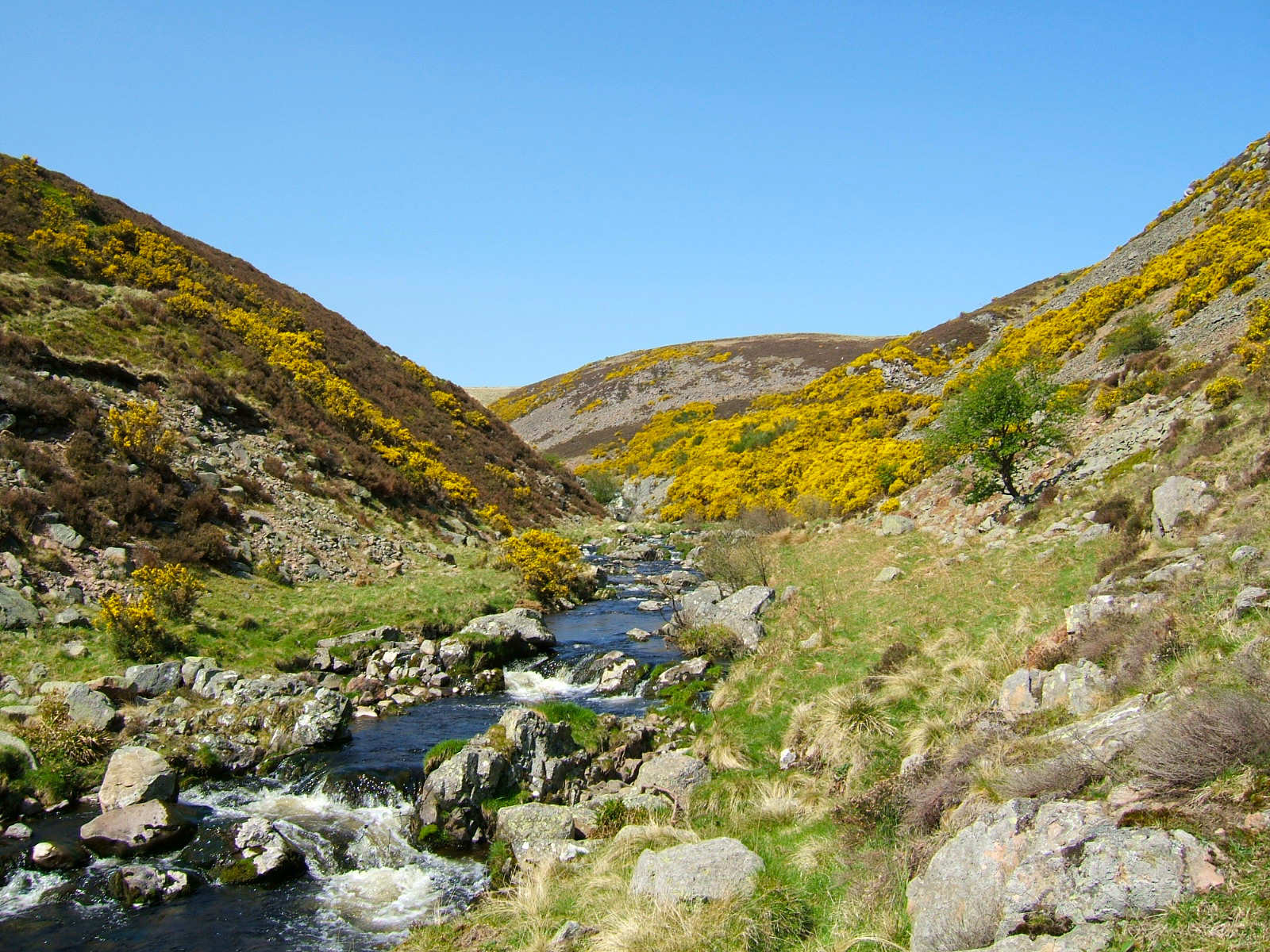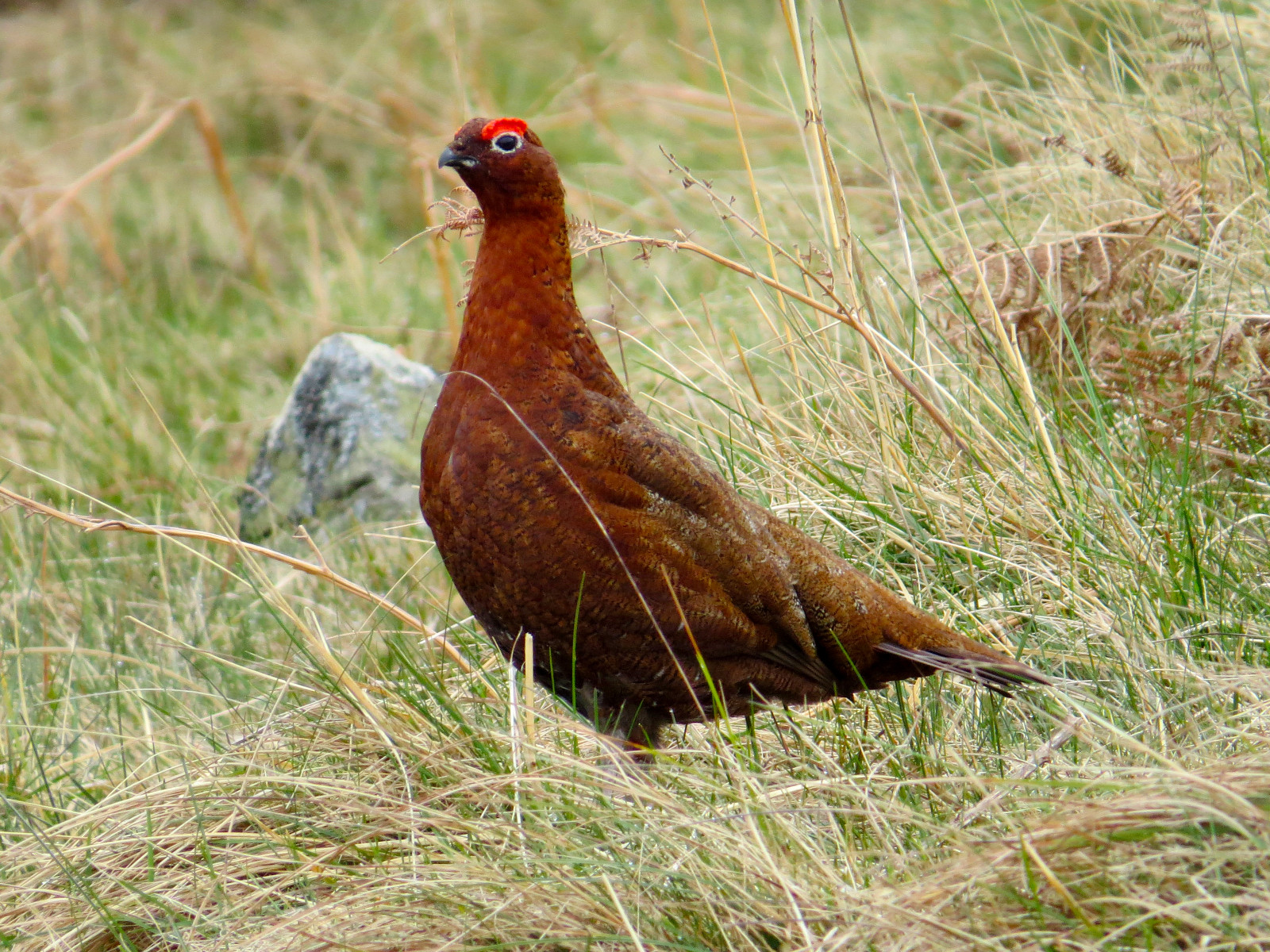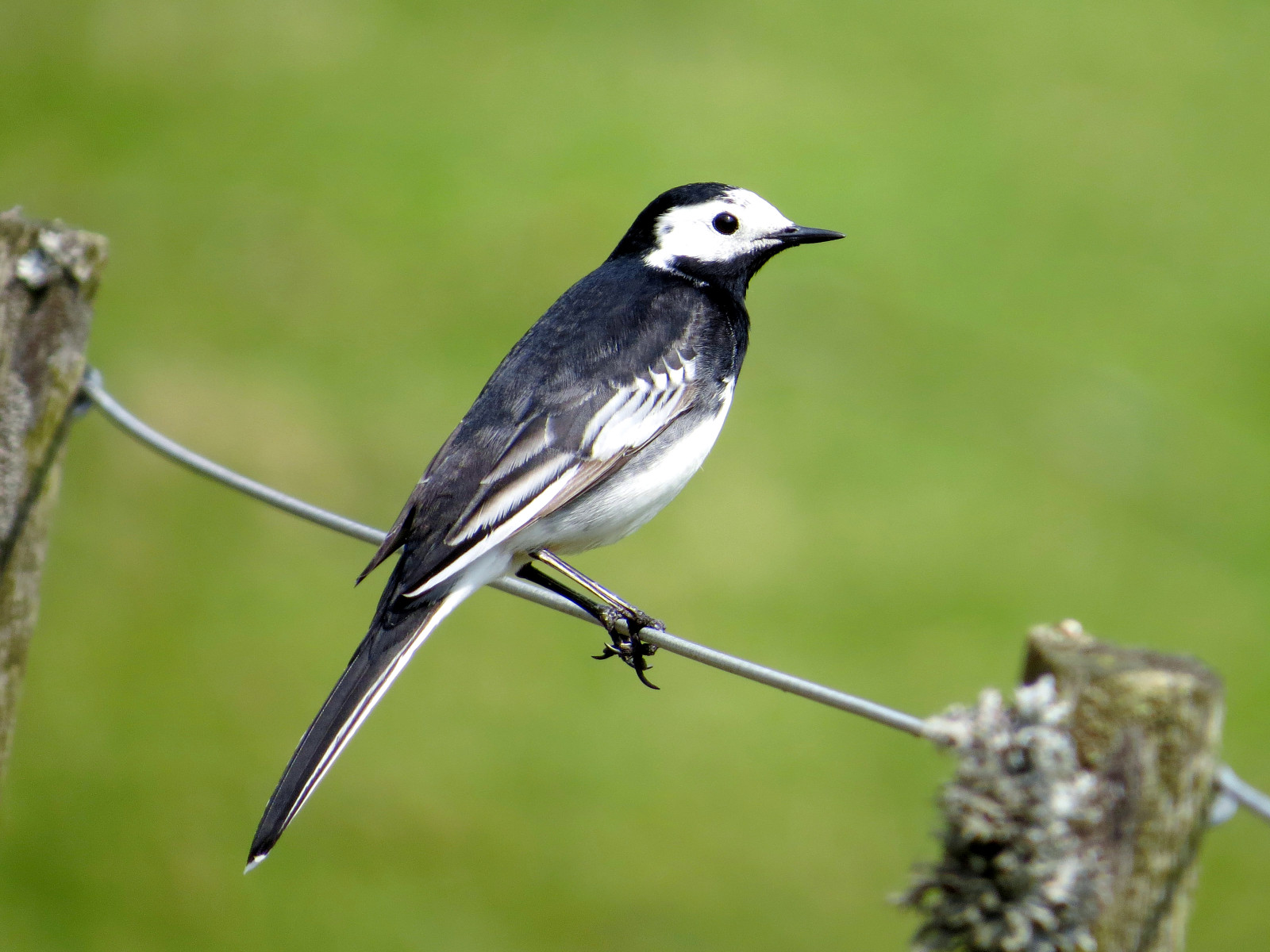Description
The Harthope is one of Northumberland's best upland valleys, with a mix of semi-natural Alder-Oak-Birch-Hazel woodland, Hawthorn scrub, sheep-grazed grass, and higher up, heather moors and some rocky crags and scree. The highest ground, on The Cheviot (815 m), is topped with blanket Sphagnum bog. If you are very lucky, the strenuous climb to the top may be rewarded with жолтоного блатарче on migration in May or September.
In the higher, steeper parts of the valley, белограден ќос breed, together with обично камењарче. Large numbers of ливадска трепетилка (the commonest bird here!) and полска чучулига breed on the more open grassy slopes. The heather moors have large populations of Red Grouse, sadly now managed for shooting; shooters also release large numbers of Red-legged Partridge and Фазан every year, likely with major detrimental effects on native ground-nesting birds. The lower slopes and woods hold зелен клукајдрвец and кукавица, and планинско ливадарче is a recent colonist with milder winters allowing their survival. Warblers include брезов свиркач, обичен свиркач, градинарско грмушарче, црноглаво грмушарче and обично грмушарче. Few waders are present, but шумска шљука are resident in small numbers and остригар and речна тринга breed along the Harthope Burn; there are also good numbers of воден ќос and планинска тресиопашка on the burn.
Sadly, the site has not escaped the general declines in so many species; several have disappeared or become very scarce in recent years. шумска трепетилка, црноглаво муварче, мала црноглава сипка and шумски свиркач have all been lost or become hard to find, and even лисесто циганче and обично ливадарче are much harder to find than just a few years ago. Raptors too have also become less easy to find, with just a few глувчар and the odd гавран, while Полска еја and сив сокол have largely disappeared, probably due to illegal persecution related to the grouse shooting.
Like most upland sites, the area is bleak in winter, though deep snow seems to be largely a thing of the past. Despite this, good numbers of лисест дрозд and дрозд боровинкар can be found, and the Birch and Alder woods attract Lesser Redpoll and елова зелентарка additional to the resident breeding numbers.
Details
Access
Unfortunately, only accessible by car; no public transport nearby. Steep slopes on the road in make the site difficult for cyclists. Click on a P in the map for directions.
Terrain and Habitat
Forest , Mountain , Canyon/cliff , Scattered trees and bushes , Grassland , Plateau , Valley , Moors/heathland , RiverConditions
Mountainous , Flat , Wet , Hilly , Rocky , Open landscapeCircular trail
NoIs a telescope useful?
Can be usefulGood birding season
Spring , SummerBest time to visit
SpringRoute
Paved road , Wide path , Unpaved road , Narrow trailDifficulty walking trail
StrenuousAccessible by
Foot , CarBirdwatching hide / platform
NoExtra info
This is one of the best places in Northumberland to see Adders (Vipera berus), Britain's only venomous snake, though they are not easy to find. Cool but sunny days in spring offer the best chances, when they come out into the open to bask in the sun. For their (and your own!) safety, do not touch them. Other 'non-birds' to look for include Common Toad, Roe Deer and Brown Hare.


